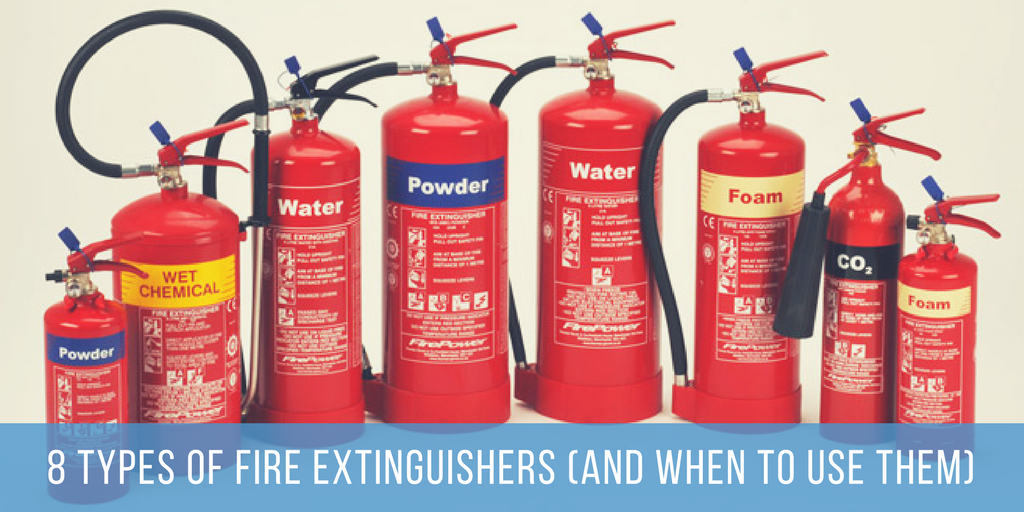When it comes to fire safety, making sure your home or workplace is prepared with the right type of fire extinguisher is a big deal. It’s a great precaution to take and, for smaller or containable fires, extinguishers can help to put them out or to mitigate a more serious situation until the fire department arrives. Of course, if the fire is significant, your priority should be to evacuate your home or office immediately and wait for firefighters outside.
Types of Fires
The Fire Tetrahedron lays out the four components required for a fire to start – heat, fuel, oxygen, and chemical reaction – and fire extinguishers are designed to put out a fire by removing one or more of these elements.
Before we get to the different types of fire extinguishers, it’s important to understand the different types of fires that these extinguishers are designed to fight. There are five different categories:
- Class A – a fire started with normal combustibles such as wood, paper, and cloth
- Class B – a fire started with flammable and combustible liquids and gases such as gasoline and paints
- Class C – a fire started by energized electrical equipment such as a short circuit in power transmission cables
- Class D – a fire started by flammable metals such as sodium, potassium and lithium
- Class K – kitchen fires
Types of Fire Extinguishers
Many homes and offices will either use general-purpose or kitchen extinguishers, but other environments, like laboratories or warehouses, might need more specific extinguishers.
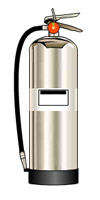 Water & Foam
Water & Foam
The water component of this extinguisher removes the heat of the fire, while the foam component removes the oxygen.
Works For: Class A fires only
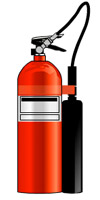 Carbon Dioxide
Carbon Dioxide
Carbon dioxide replaces the fire’s oxygen and, as the gas is contained under pressure it creates a cold discharge upon release, which removes the heat of the fire too.
Works For: Class B and C fires
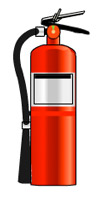 Dry Chemical
Dry Chemical
This extinguisher removes the chemical reaction of a fire, and is the most used of all fire extinguishers because of its versatility across multiple classes.
Works For: Class A, B and C fires (multi-purpose); Class B and C (ordinary)
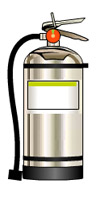 Wet Chemical
Wet Chemical
This extinguisher removes heat and creates a barrier between oxygen and fuel so a fire cannot be re-ignited. The chemical is sprayed as a mist, cooling the fire’s heat and creating a blanket effect over the fuel.
Works For: Class K fires (particularly good for fires started by oils or fats)
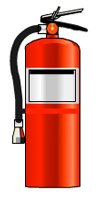 Clean Agent
Clean Agent
Also called Halogenated extinguishers, these include halon agents and new, less ozone depleting halocarbon agents, which extinguish a fire by interrupting its chemical reaction.
Works For: Class B and C fires
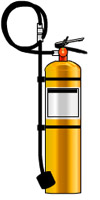 Dry Powder
Dry Powder
This works similarly to the dry chemical extinguisher as the powder separates the fuel from oxygen or removes the heat, but this extinguisher is only used to fight combustible metal fires.
Works For: Class D fires
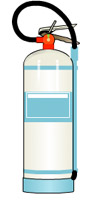 Water Mist
Water Mist
This extinguisher takes away the heat of the fire only.
Works For: Class A and C fires
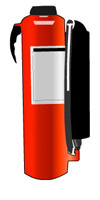 Cartridge Operated Dry Chemical
Cartridge Operated Dry Chemical
This extinguisher interrupts the chemical reaction of the fire, and creates a barrier between the oxygen and the fuel and, like the dry chemical extinguishers, works well on a variety of fire types.
Works For: Class A, B and C fires
It’s important to use the right extinguisher for the type of fuel – using the incorrect one can allow a fire to re-ignite, even when it seems to have been put out successfully. We’ve put together a simple chart to help you choose the right extinguisher for your fire needs.
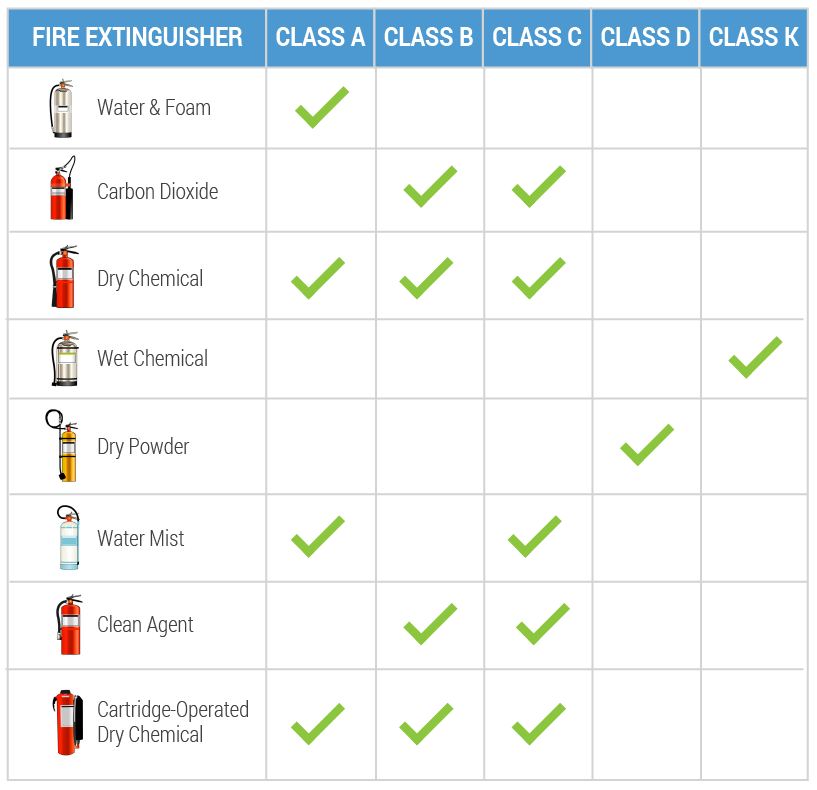
And remember to make sure that everyone in your home or workplace knows how to operate whichever fire extinguisher you have – specific training will be provided as necessary in the workplace and you should always remember the P.A.S.S technique!

